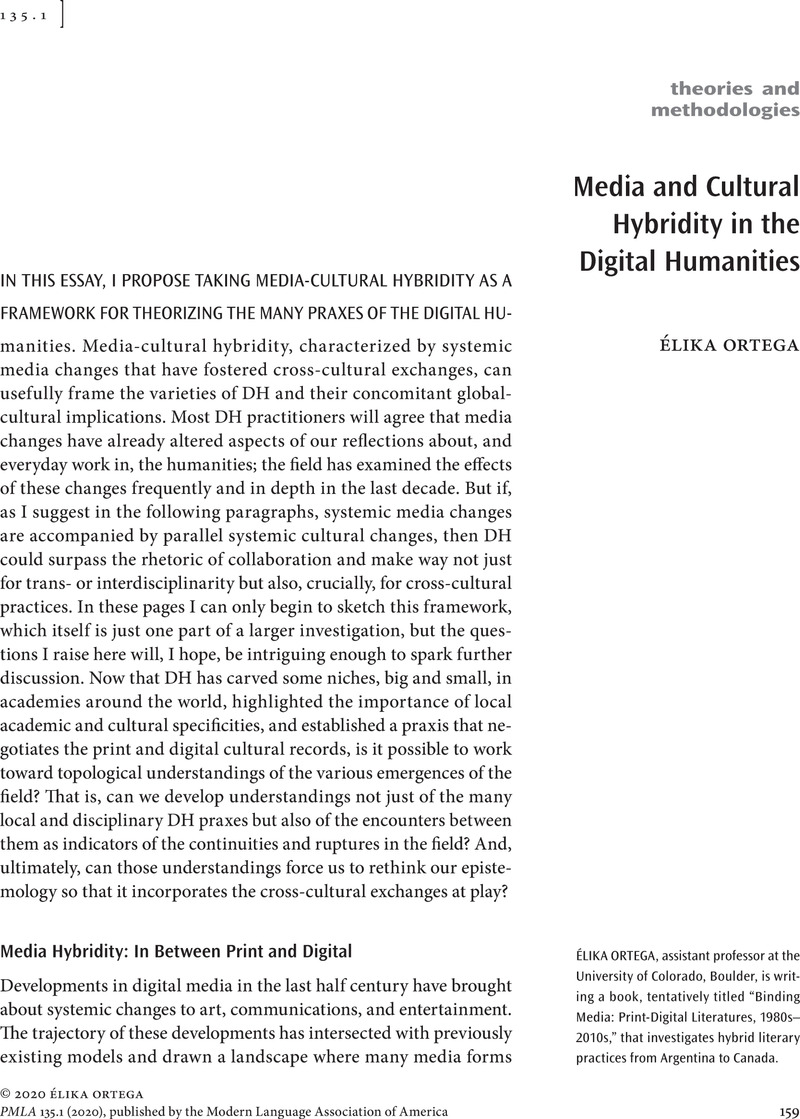Crossref Citations
This article has been cited by the following publications. This list is generated based on data provided by Crossref.
Spence, Paul
and
Wells, Naomi
2021.
Introduction: Digital Modern Languages Launch Issue.
Modern Languages Open,
Vol. 1,
Issue. ,
Toffano, Giacomo
and
Smets, Kevin
2023.
Refugee hybrid fiction: Rhetorical, generic and intermedial hybridity as strategies of political resistance.
Crossings: Journal of Migration & Culture,
Vol. 14,
Issue. 2,
p.
177.
Leguina, Adrian
Manninen, Kadja
and
Misek, Richard
2025.
Beyond the “substitution effect”: the impact of digital experience quality on future cultural participation.
Cultural Trends,
Vol. 34,
Issue. 1,
p.
105.



